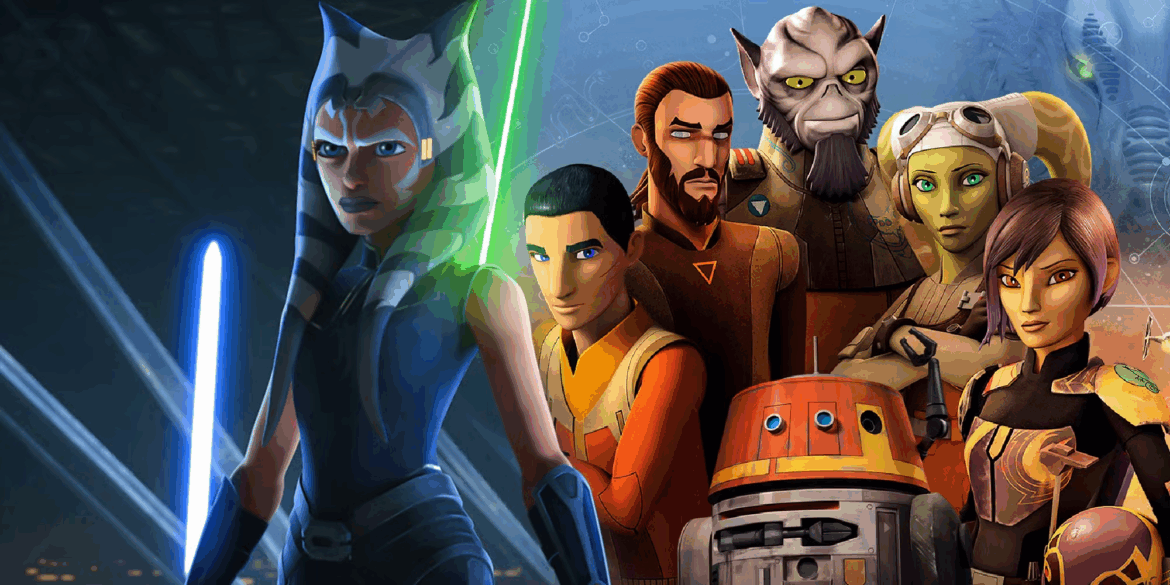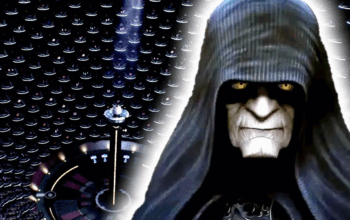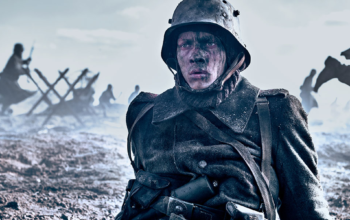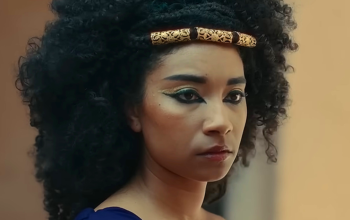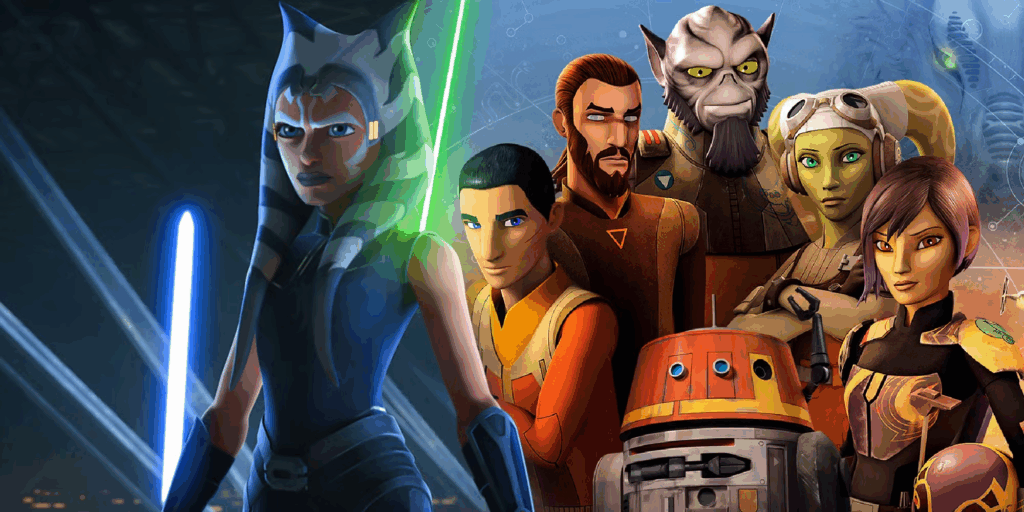
This is the 2nd part of the ranking of the disney Star Wars shows. The last ones are ranked as bad. This list will discuss the shows ranked as okay. While they had moments of greatness, a lot of their story and lore choices prevent them from being ranked as good.
7. The Clone Wars Season 7

At first glance, Season 7 feels like a worthy conclusion to one of the most beloved animated series in Star Wars history. But once you dig into the details, it becomes clear how sloppy and uneven the road to that finale really was.
You can tell this wasn’t written by the same team behind the original series. It doesn’t feel like the Clone Wars that ran pre-Disney — not in tone, not in structure, and definitely not in pacing. The 12-episode format, split into just three arcs, ends up working against the show. What used to be a 22-episode season with variety and momentum now feels bloated and padded.
The Bad Batch arc serves no real purpose other than to launch a spinoff — and even that introduction feels half-baked. Then there’s the infamous Martez sisters arc, where Ahsoka is dragged into four episodes of repetitive filler, driven by two of the most frustrating characters in the entire series. They hijack the show, act purely out of stupidity, and reduce Ahsoka to a passive third wheel. Worst of all, there’s no natural transition between that story and her sudden decision to help Bo-Katan — someone who literally tried to kill her the last time they met.
Only the final arc carries any real weight. The Siege of Mandalore and Order 66 tie the show beautifully into Revenge of the Sith — but even that’s undercut by a bizarre, out-of-character moment between Ahsoka and Obi-Wan. When Obi-Wan tells her he’s heading to Coruscant to help defend the capital from a direct Separatist assault, Ahsoka lashes out and accuses him of “playing politics.”
That is a deeply unfair and bratty response that makes her look entitled and clueless. The Republic capital is under siege — lives are on the line — and yet Ahsoka dismisses it like its nothing important. It makes her look immature as a character in a moment when she should’ve understood Obi-Wan’s situation was too great to help her.
This season either needed brand-new, tighter arcs or serious trimming of what we got. The animation is stunning, and yes, it was meaningful to see the series close out with such a somber and emotional tone. But the journey getting there felt more like a corporate obligation than a natural conclusion. For a show that meant so much to a generation of fans, it deserved better.
6. Star Wars Rebels

Rebels was the first major Star Wars project released after Disney’s acquisition of Lucasfilm — and unfortunately, it shows. If you were a fan of The Clone Wars, the adjustment to Rebels is jarring. The animation style is more cartoonish, the tone is significantly softer, and the stakes feel far less real.
Where Clone Wars was gritty, complex, and often shocking in its brutality (with recurring characters dying all the time), Rebels pulls its punches. It treats animation like it’s only for kids, and that’s a mistake. Just because something is animated doesn’t mean it has to be sanitized. Clone Wars proved that animation could carry real weight — Rebels often forgets that.
To the show’s credit, many of the main characters are actually solid. Kanan and Hera are easily the standouts — they feel like fully realized people with believable arcs. Zeb is dependable muscle with that actually has some brains, and Sabine works well when they stop stacking her with ridiculous backstory traits no 16-year-old could realistically have. But the biggest issue is the main character himself: Ezra Bridger.
Ezra is easily the weakest part of the series. He’s immature for too long, and his growth never feels natural. His role as the audience surrogate just doesn’t hold up against stronger characters around him, and it’s hard to root for him when others are simply more interesting and capable.
The show also makes baffling choices with worldbuilding. The heroes constantly escape without consequence, stormtroopers are canonically terrible shots because they were trained to be ineffective (yes, really), and even the Inquisitors — potentially terrifying villains — are treated like disposable Saturday morning cartoon baddies. Their spinning lightsabers look silly and rob them of any menace.
And the rebellion? It’s toothless. They introduce Saw Gerrera, a character defined by his moral extremes, but never actually show his more violent side. His war crimes are only talked about, never depicted. The gray morality that made Rogue One compelling is completely missing here.
To be fair, Rebels did get better as it went along. Later seasons raise the stakes and introduce some genuinely great lore expansions, and some of its characters and ideas carried into stronger projects down the line — which is, in itself, a legacy worth noting. But as a follow-up to The Clone Wars, it felt like a major step backward.
5. The Bad Batch
The best animation Star Wars has ever had — wasted on a show that can’t decide what it wants to be.

The Bad Batch had a golden opportunity: to explore what happened to the clone troopers after Order 66. Were they cast aside? Did they feel remorse for betraying the Jedi? What happened to their identity when they were replaced by stormtroopers? That kind of depth should’ve been the foundation. Instead, we get a sluggish, side-quest-heavy series that rarely digs into any of that.
While visually distinct, the titular squad doesn’t have much personality beyond their gimmicks. Hunter, despite being the leader, is easily the weakest of the group. Wrecker’s the muscle, Tech is the brains, Crosshair has the edge — and Echo’s just their. Then there’s Omega, the mandatory Star Wars kid insert, there mostly to “connect with the younger audience.” It’s a tired trope by now, and sadly, she doesn’t evolve much over two seasons.
The show constantly gets derailed by pointless filler missions. I understand they’re mercenaries doing odd jobs to survive, but there’s only so many episodes where the Batch rescues a creature or delivers cargo before it starts to feel like narrative wheel-spinning.
That said, the show does have flashes of brilliance. Crosshair’s arc — from loyal Imperial enforcer to broken man questioning his choices — is the most compelling part of the series. His disillusionment with the Empire is earned and emotional, and it’s the kind of story the entire show should have been built around.
There’s also a brilliant two-part arc involving the Galactic Senate voting to phase out clones in favor of stormtroopers, capped by one of the best uses of the Emperor in any Star Wars media. It’s a genuinely chilling moment and proves the writers can hit greatness when they want to.
The show also flirts with tying itself to Project Necromancer — the supposed plan behind Palpatine’s return in the sequels. But instead of committing, it tiptoes around the idea, possibly trying to give Filoni an escape hatch to retcon or “decanonize” the sequel trilogy altogether. The destruction of the cloning facility and its data could serve as a narrative dead-end for the Emperor’s resurrection — if they’re bold enough to use it.
To its credit, the show also finally treats death with consequence. When Tech dies, he stays dead — and it matters. It affects the team, their dynamic, and the mission. In a franchise where death often means nothing, that’s a rare and refreshing change.
But even with its visual polish and occasional standout episodes, The Bad Batch struggles with identity. It feels less like a story driven by an artist’s vision and more like something built by committee — safe, meandering, and afraid to really commit to the darker, more complex ideas it teases.
4. Ahsoka
The one that almost worked — and that’s what makes it so frustrating.

Ahsoka might be the show I feel most conflicted about. It had moments of brilliance, gorgeous visuals. It came so close to being great. But a handful of glaring issues keep it from earning a higher spot.
The series works fairly well as a live-action continuation of Star Wars Rebels, which is clearly its intended function. Ahsoka’s portrayal is more stoic and emotionally distant — which makes sense, considering her background as a child soldier in the Clone Wars. There’s weight in her silence, even if some viewers expected the more expressive version from The Clone Wars.
But where this show truly stumbles is in its treatment of plot logic, character consequences, and lore-breaking decisions.
For starters, characters make baffling decisions with zero accountability. Hera disobeys direct orders, leading pilots to their deaths, and is then brought to a disciplinary hearing — only to face no consequences whatsoever. Her ship isn’t grounded, her rank isn’t stripped, and the hearing exists solely to check a narrative box. It’s a wasted opportunity to inject real tension and realism into the story.
Sabine, however, is where the show completely unravels. Not only does she regress into a rebellious teenager, despite being in her 30s, but she actively causes catastrophic damage to the galaxy by handing over the map to Thrawn. She never tells Ezra about it, either, which makes her feel dishonest at best and downright despicable at worst.
Worse still is the show’s inexplicable decision to give Sabine Force powers.
This isn’t just a minor issue. It’s a universe-altering shift that completely undermines decades of established lore. Sabine was always notable for not being Force-sensitive — a skilled Mandalorian who fought on equal ground with Jedi despite not having their gifts. Turning her into a Jedi-lite figure not only contradicts her established arc, but it raises endless questions. If she had Force potential all along, why didn’t Kanan train her during Rebels? Why didn’t anyone notice?
This “democratization” of the Force — making it available to anyone with enough willpower — dilutes one of Star Wars’ core concepts. And it’s done here not for narrative depth, but seemingly just to make Sabine “special.”
The finale only compounds the problems. I’m fine with Thrawn escaping and Ahsoka/Sabine getting stranded while Ezra makes it home — that’s a compelling setup for a season 2. But the way the characters react to their situations is baffling.
Ahsoka doesn’t reprimand Sabine for her mistakes. She offers no reflection on the chaos they unleashed by letting Thrawn go. Instead, she shrugs and delivers this gem of a line:
“Ezra is where he needs to be. And so are we.”
No. Absolutely not.
They just handed a galactic warlord the keys to the Empire, and the show treats it like a spiritual growth moment. It’s lazy, it’s tone-deaf, and it deflates any tension the story built up. We needed regret. We needed guilt. Instead, we got vague mysticism and a sunset shot.
Ahsoka had all the right pieces, but the execution fumbled at every critical moment. It’s a show I wanted to like… and that makes its failure hurt even more. Fortunatly their is a season 2 on the horizon, this is an opportunity for showrunner Filoni to better work on his craft. This has understandably been a big transition from animation where you have pace your show and characters diffrently.
3. Skeleton Crew

Stranger Things in Star Wars? That’s definitely not something I expected — but in the case of Skeleton Crew, it actually worked… to a point.
Jude Law absolutely steals every scene he’s in. He’s not just another Jedi — in fact, he’s barely one at all. His character has only minimal training in the Force, passed down from a lone Order 66 survivor who was later killed herself. That leaves him with just scraps of knowledge of the force and none of the discipline or wisdom the Jedi normally instill. And that makes him even more dangerous. When he finally turns on the children and takes over their ship, it’s genuinely tense. You really believe what an adult like him could do to a group of kids stranded in space.
I also have to give Skeleton Crew serious credit for its visuals. Unlike The Acolyte, which came out the same year, this show actually looks like it has a budget. Space Tortuga looks exactly how I imagined it would. And the giant crab creature? Shockingly, it’s a stop-motion miniature — a technique we haven’t seen used in Star Wars since the original trilogy. It’s that kind of love for practical effects that gives this series a sense of texture and authenticity missing from other modern entries.
Even the child actors are solid, which is rare when it comes to Star Wars. Each of them goes through a meaningful arc: Wim outgrows his naïve hero-worship of the Jedi; Fern lets go of her tomboy bravado and learns to open up emotionally; and KB gradually breaks through her robotic, cyborg persona to find her humanity. For a series marketed to a younger audience, there’s surprisingly thoughtful character development.
While the tone is still lighthearted, Skeleton Crew isn’t afraid to get gross or unsettling when necessary, like many 80s movies. That edge gives it some welcome contrast.
So, with all that going for it, why isn’t this show higher on the list?
Unfortunately, it runs into major worldbuilding and lore issues that seriously hurt its place in canon. Chief among them is Attain — the planet where the kids grew up. It’s supposedly been isolated from the rest of the galaxy for centuries, and yet, it still produces currency for the galaxy. Why? How? It would have made way more sense if they had only cut themselves off during the rise of the Empire, but the show never explains this. They also never explain why they choose to remain isolated when there is a new Republic around. Instead, it feels like the writers just waved away logic because “it’s for kids.”
But that excuse doesn’t hold water. This is way too complicated for even adults to follow. “It’s for kids” should never justify cutting corners in storytelling, especially when Star Wars has been telling smart, layered stories for all ages since 1977. At least Skeleton Crew’s lore problems are self-contained, theirs nothing in this that really seeps out to the other shows, so I’m willing to give it a little leeway on that.
The other big problem is that the ending is very abrupt. The villain is defeated, Wim looks at the skys with X-wings and then… credits. That’s it. If the showrunners weren’t sure whether they’d get a second season, they should’ve at least given us a proper wrap-up: the kids are together with their fellowship strengthened, with Attain slowly reconnecting with the larger galaxy. A few more minutes could’ve turned an abrupt ending into a satisfying conclusion with the door left open.
So no, Skeleton Crew isn’t spectacular. It might not even be “good” by strict standards. But it has enough strong ideas, performances, and production quality to land it this high on the list. Unfortunately, the show was released right as The Acolyte backlash was peaking and the streaming bubble began to burst. Its viewership was poor, and that likely means it won’t return for a second season.
